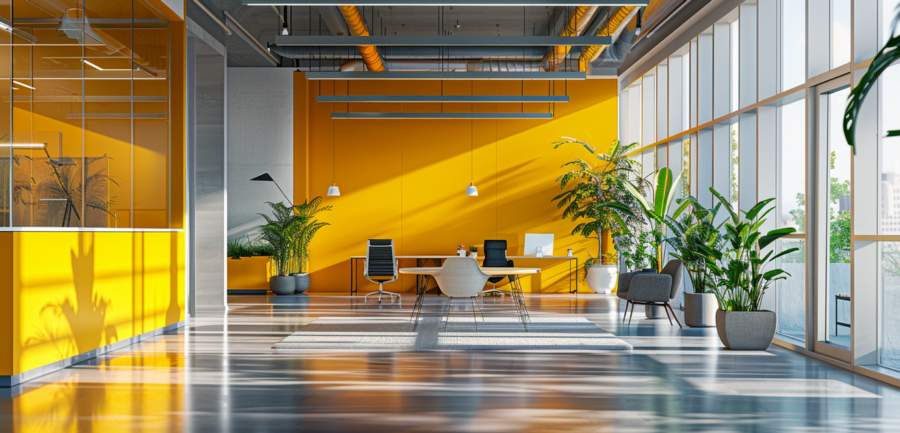Great office lighting is never just about brightness. It’s about how light makes people feel, how it interacts with the architecture, and whether it helps or harms the rhythm of the workday.
The Colour Temperature Mood Swing
Not all white light is created equal. That’s not just a philosophical jab—it’s a measurable fact. Office lighting tends to fall somewhere between 3000K (warm white) and 5000K (cool daylight). And yes, those numbers matter.Cooler light (4000K–5000K) is good for focus, alertness, and staying awake during yet another metrics meeting. But overdo it, and your break room starts to feel like a dental theatre—harsh, sterile, and entirely unappetising.
Warmer tones (around 3000K) are more relaxing, ideal for breakout spaces and quiet zones. Still, too much of it across an entire floorplan and suddenly everything looks vaguely sepia-toned and unproductive.
The key is zoning: match the light temperature to the intent of the space. Use cooler light in task-driven areas, warmer tones in lounges or informal spaces, and mix with natural daylight wherever possible.
Lighting Fixtures Are Part of the Architecture
If your overhead fixtures look like leftovers from a mid-90s call centre, you’re missing a huge opportunity. Fixtures are part of the visual language of a space—no different than doors, furniture, or flooring.Architectural lighting design considers shape, shadow, reflection, and how light fixtures integrate with sightlines and ceiling height. Flush-mount grid panels might be cheap and functional, but they offer nothing to a modern workspace trying to project clarity, innovation, or warmth.
Pendant lights, recessed directional spots, and well-placed wall lights create interest without becoming overbearing. Good fixtures serve the space both aesthetically and functionally. They signal that someone gave the lighting more thought than just “brighter is better.”
Open Plan, Open Problems
Open-plan offices come with their own lighting challenges. One bank of lights for thirty desks means some people will get eye strain while others feel like they’re sitting in a sunspot. Uniformity sounds good in theory, but real humans need contrast, variation, and control.Glare is a major offender. If you’ve ever tried to read a spreadsheet while the light bounces off your monitor like a signal flare, you know the pain. And don’t forget shadow zones—those awkward pockets where the lighting doesn’t reach properly and everything feels slightly abandoned.
Use a combination of ambient, task, and accent lighting to break up the grid. Avoid overhead-only solutions. Desk lamps, under-shelf LEDs, or adjustable downlights offer more control and reduce the feeling of being trapped in a photocopier.
The Science of Not Going Blind by 3PM
Eyes aren’t built for eight hours of fluorescent glare. Poor lighting can contribute to fatigue, headaches, and even long-term vision strain. Brightness levels should adjust to natural light cycles, not fight them. And yes, the sun is your ally if you don’t block it out with blackout blinds like a vampire on payroll.Use light sensors and dimming systems where possible to modulate artificial lighting throughout the day. This doesn’t just save energy—it makes the space more humane. Humans weren’t meant to work under permanent midday simulation. Gradual shifts in brightness mimic circadian rhythm cues, helping employees stay alert without that fourth espresso.
Glowing Reviews
Lighting is invisible when it’s good—and painfully obvious when it’s bad. Most people won’t notice a well-designed system, but they’ll feel better in the space. They’ll stay focused longer, complain less, and maybe even skip one or two passive-aggressive post-its about headaches.Treat lighting as a design strategy, not an afterthought. Consider what the space is used for, how it flows, where shadows fall, and how much natural light can be supported—not smothered. Give the office some light that works with the team, not against them.
When people walk into a room and instinctively relax or focus, it’s not magic. It’s wattage with purpose.
Article kindly provided by citycentremaintenancemcr.co.uk

